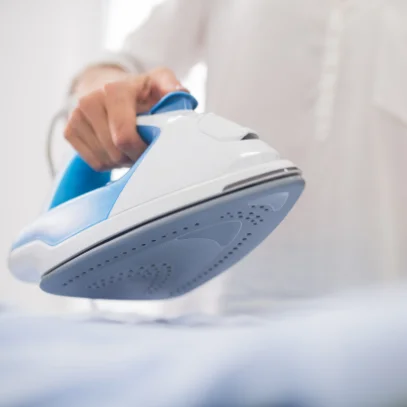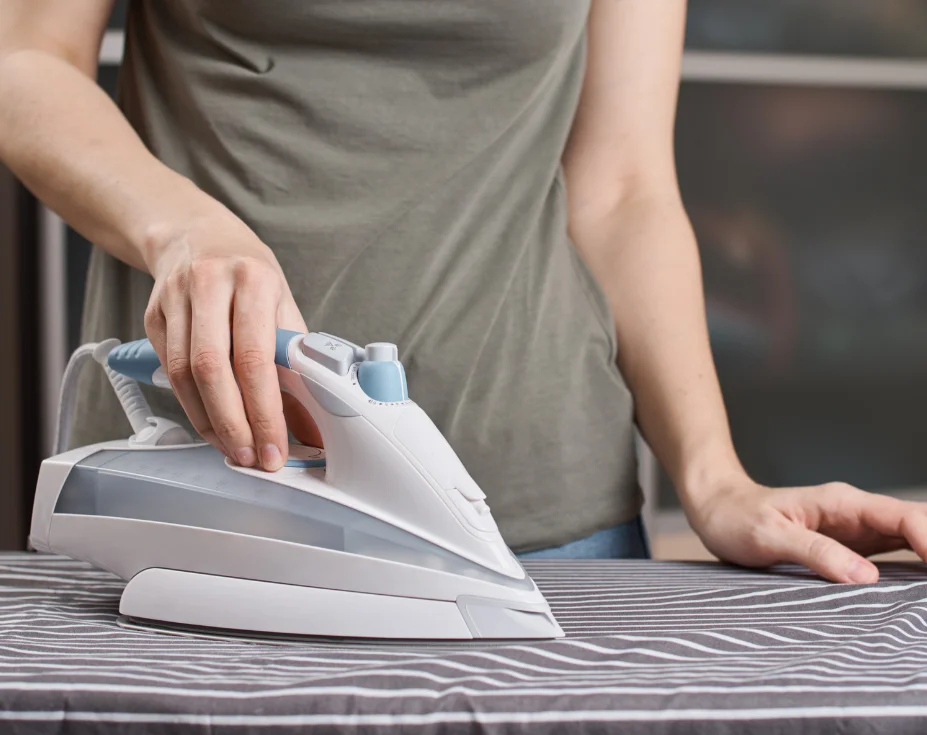Proper Ironing: The Best Tips for Wrinkle-Free Clothing
The Basics of Ironing
Ironing made easy! Our ironing tips help you make the process more effective and faster. This includes sorting laundry by material and thickness before ironing. The right technique can also save you time and nerves. Proper ironing protects the materials and extends the life of your garments.
It’s important to prepare well before you start ironing and to use the right tools and techniques. This makes ironing easier and delivers better results.
A good iron is key to effortless ironing. Make sure your iron is lightweight and glides smoothly over the fabric to avoid damaging clothing. Ironing not only improves the look of your clothes, but also has hygienic benefits by killing bacteria and making garments soft and smooth.
Preparing the Laundry
Thorough preparation is essential when ironing. Make sure your laundry is clean and slightly damp to smooth out wrinkles more easily and achieve an even result.
Before you start ironing, you should sort your garments by material. This makes it easier to select the right ironing temperature and prevents damage to delicate fabrics. By hanging clothes upside down, you can already avoid many wrinkles and make ironing easier later on.

Sorting Laundry
Properly sorting laundry is the first and one of the most important steps. Colors, materials, and washing temperatures should be considered to avoid discoloration and damage. White laundry should be washed separately, as well as delicate materials like silk or wool. This ensures that each garment receives the appropriate care.
The Right Ironing Temperature
To protect your clothing and achieve optimal results, it’s essential to use the correct ironing temperature. The care label on your garments provides important information on the appropriate ironing heat. For delicate materials like silk and wool, always use the lowest heat setting.
Ideal ironing temperatures for various materials are:
Wool: about 180 °C
Linen: up to 220 °C with steam
Cotton: up to 200 °C
Polyester: maximum 150 °C
Sturdier materials can be ironed at higher temperatures, but be careful not to use excessive heat. Delicate fabrics should always be ironed from the reverse side to avoid shiny marks. This keeps your garments looking beautiful and well cared for over time.
Ironing While Damp
Slightly damp laundry is much easier to iron smooth. Therefore, you should lightly moisten your clothes before ironing. Using a steam iron or a spray bottle can help dampen dry garments and make ironing easier.
Steam is especially effective against stubborn wrinkles. It's best to use distilled water to prevent lime deposits in the iron. A damp cloth can also be helpful for smoothing out difficult creases.
Ironing Shirts and Blouses Properly
Shirts and blouses are often a challenge to iron. But with the right technique, even this task becomes a breeze. Start with the tricky parts, like the shirt collar and cuffs, and then move on to the larger areas. This way, you achieve the best results and avoid unnecessary creases.
A well-kept shirt or a neatly ironed blouse leaves a great impression and gives you confidence. Be sure to treat garments made from different materials accordingly.
Ironing Shirts
Ironing a shirt is absolutely not rocket science! You just need to follow the right sequence. Always start with the collar: first the inside, then the outside. Then move on to the cuffs. Unbutton them and iron the inside of the cuffs first, then the outside.
The shoulder area is ironed by laying the shirt open and inside-out over the ironing board. Next, iron the button placket and the front and back of the shirt. Keep the iron moving constantly to ensure even results and prevent creases.
Hang the shirt on a hanger immediately after ironing to avoid wrinkling and let it cool down.
Ironing Blouses
Blouses require special attention to avoid shiny spots and achieve a flawless result. Be sure to follow these tips:
Set the correct temperature.
Iron the blouse from the reverse side if necessary.
Make sure the fabric stays nice and doesn’t develop unwanted shine.
The same basic rules as with ironing shirts apply: Start with the small details like the collar and cuffs and work your way to the larger areas.

Ironing T-Shirts and Sweaters
T-shirts and sweaters are often easier to iron than shirts and blouses but still require the right technique.
Ironing T-Shirts
Turn the T-shirt inside out before ironing and lay it smoothly on the ironing board. Start with the sleeves by turning them right side out and ironing the double-layer sleeve area from both sides. Then move on to the larger areas, applying light pressure and keeping the iron in motion to avoid creases.
Ironing Sweaters
Turn the sweater inside out before ironing and lay it smoothly on the ironing board. Start with the sleeves by turning them right side out and ironing the double-layer sleeve area from both sides. Then move on to the larger areas, applying light pressure and keeping the iron in motion to avoid creases.
Ironing Pants and Skirts
Pants and skirts also require special techniques when ironing to achieve perfect results.
Ironing Pants
Pants should be ironed from top to bottom. Start with the waistband and pockets, which should be turned inside out and ironed flat. Seams should be ironed carefully to avoid puffing of the fabric. Slightly dampen the seams for better results. After ironing, lay the pants flat and inside out, placing one leg precisely over the other.
Ironing Skirts
Pleated skirts require a special method where the pleats are treated with steam to preserve their shape. Pleated skirts can be smoothed well with a steam iron by steaming the pleats at a safe distance. To maintain the shape of folded skirts, you should place the iron on the fabric but not press directly on the pleats.
Ironing Delicate Fabrics
Delicate fabrics such as silk or wool require special care when ironing. A low temperature is recommended for delicate materials like chiffon. Use tissue paper or newspaper to protect sensitive fabrics.
Ironing Silk
To protect delicate fabrics such as silk, place a clean dish towel over the garment. Silk should always be ironed inside out to avoid damage. Dark fabrics should be turned inside out before ironing to prevent shiny marks.
Avoid ironing directly over prints or appliqués, as they may stick to the iron.
Ironing Wool
When ironing wool, special care is required. The ideal ironing temperature for wool is around 150 degrees Celsius. This recommendation applies to most wool fabrics. Use a pressing cloth to avoid direct contact between the iron and the wool fabric, preventing shiny spots.
Lightly moistening the fabric can make ironing easier. Here are some helpful tips:
- Spray a little water onto the wool fabric.
- Iron the fabric while it is still slightly damp.
- Be sure not to leave the iron in one spot for too long to avoid scorching or overheating the fabric.
Care and Cleaning of the Iron
A well-maintained iron is essential for optimal ironing results. It is recommended to clean the iron after each use to prevent buildup. If you notice visible stains on the soleplate, act immediately to avoid damaging your laundry. You can often recognize limescale buildup by white spots on the ironed clothes or if the steam no longer comes out properly. Home remedies such as vinegar and citric acid are effective alternatives to chemical descalers. Modern irons often have an indicator that shows when descaling is necessary.
Wrinkle-Free Clothing While Traveling
Traveling and wrinkle-free clothing are often hard to combine. But with the right tips, it’s absolutely possible. It’s best to invest in wrinkle-resistant fabrics that are less prone to creasing. When packing, roll individual garments and hang them up immediately upon arrival to avoid wrinkling. Use the steam in the bathroom to smooth out wrinkles by hanging your clothes there. A kettle can also be useful to direct steam onto wrinkled clothing and smooth it out.


